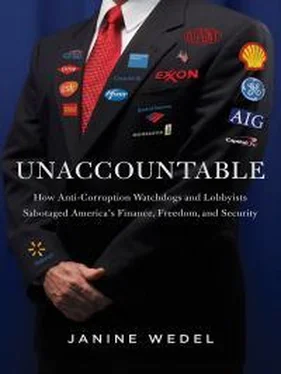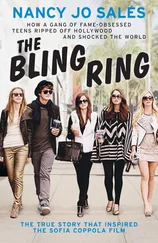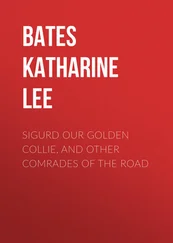78. S.C. Lewis, “From Journalism to Information: The Transformation of the Knight Foundation and News Innovation.” Mass Communication & Society , 2012 (http://conservancy.umn.edu/bitstream/123291/1/MC%26S%20-%20From%20Journalism%20to%20Information%20-%20the%20Transformation%20of%20the%20Knight%20Foundation%20and%20News%20Innovation.pdf).
79. Shortly before the United States invaded Iraq, the Center posted the draft “Patriot II” legislation that had hitherto been secret. Later in 2003, it published all the contracts the United States had issued in Iraq and Afghanistan. Its report Windfalls of War , which won a George Polk Award, was the first to identify that the bulk of the contracts were to Halliburton, Vice President Dick Cheney’s former employer. Five years later, Lewis co-authored a lengthy analysis and chronology of the George W. Bush administration’s pre-war rhetoric on the Iraq invasion, identifying 935 “false statements” about Saddam Hussein’s threat to U.S. national security.
80. Like the Center for Public Integrity, ICIJ also relies on grants from foundations and individual donations: “We rely heavily on charitable foundations and on financial support from the public.” See: http://www.icij.org/about and http://www.razoo.com/story/Icij.
81. See ICIJ’s website (http://www.icij.org/blog). In addition to these initiatives, in 2009 Lewis co-created the Investigative News Network, “a nonprofit consortium of over 90 nonprofit, non-partisan newsrooms around the country dedicated to investigative and public-service journalism.”
82. “Philanthro-Journalism: Reporters Without Orders: Can journalism funded by private generosity compensate for the decline of the commercial kind?” The Economist , June 9, 2012 (http://www.economist.com/node/21556568).
83. Harry Browne, “Foundation-Funded Journalism: Reasons to be Wary of Charitable Support.” Journalism Studies , vol. 11, no. 6, 2010, pp. 889-903. See also: http://www.slate.com/articles/news_and_politics/press_box/2009/09/nonprofit_journalism_comes_at_a_cost.html.
84. Tellingly, Barnes gets played by one nefarious power broker who eventually kills her.
85. Alexander C. Kaufman, “Matt Yglesias Named Executive Editor of Ezra Klein’s New Vox Media Venture.” FishbowlNY, January 27, 2014 (http://www.mediabistro.com/fishbowlny/matt-yglesias-named-executive-editor-of-ezra-kleins-new-vox-media-venture_b200941).
86. http://krugman.blogs.nytimes.com/2014/03/23/tarnished-silver/?_php=true&_type=blogs&_r=0.
See also: http://www.nytimes.com/2014/03/22/opinion/egan-creativity-vs-quants.html?src=me&ref=general.
87. Mayhill Fowler’s account of “Bittergate” is in a November 5, 2009 post in the Huffington Post (http://www.huffingtonpost.com/mayhill-fowler/bittergate-the-untold-sto_b_346342.html).
88. Patrick Radden Keefe, “Rocket Man. How an unemployed blogger confirmed that Syria had used chemical weapons.” The New Yorker, November 25, 2013 (http://www.newyorker.com/reporting/2013/11/25/131125fa_fact_keefe).
89. The 2010 Pew report discussing citizen journalism is at: http://stateofthemedia.org/2010/overview-3/.
90. Alternet ’s “Bubble Barons” project can be seen here: Kevin Connor, “Exposing the Great American Bubble Barons: Join Us in the Investigation.” AlterNet, February 23, 2010 (http://www.alternet.org/story/145735/exposing_the_great_american_bubble_barons%3A_join_us_in_the_investigation).
91. Katharine Q. Seelye, “Times Reporter Agrees to Leave the Paper.” New York Times, November 10, 2005 (http://www.nytimes.com/2005/11/10/business/media/10paper.html).
92. Raffi Khatchadourian, “No Secrets.” The New Yorker , June 7, 2010 (http://www.newyorker.com/reporting/2010/06/07/100607fa_fact_khatchadourian).
93. John Burns and Ravi Somaiya, “Wikileaks Founder On the Run, Trailed by Notoriety.” New York Times , October 23, 2010 (http://www.nytimes.com/2010/10/24/world/24assange.html?pagewanted=all).
94. A description of the Times ’ reasoning for not linking to the WikiLeaks site can be found in this January 2011 piece: Bill Keller, “Dealing With Assange and the Wikileaks Secrets.” New York Times, January 26, 2011 (http://www.nytimes.com/2011/01/30/magazine/30Wikileaks-t.html?pagewanted=all).
Later Assange leaked a massive number of U.S. State Department cables. While the New York Times got access to them from another paper, that was not his wish. He apparently wanted to retaliate against the Times and was willing to be far less than open, even though the Times would certainly be the ideal place to spread his information far and wide. (Paul Farhi, “WikiLeaks Spurned New York Times, But Guardian Leaked State Department Cables.” Washington Post , November 29, 2010 [http://www.washingtonpost.com/wp-dyn/content/article/2010/11/29/AR2010112905421.html].)
In the midst of all this, Assange was mired in allegations of sexual abuse and financial difficulties.
95. Leonard Downie, Jr. is the former Washington Post executive editor. Reported in: John Sullivan, “PR Industry Fills Vacuum Left by Shrinking Newsrooms.” ProPublica , co-published with Columbia Journalism Review , May 1, 2011 (http://www.propublica.org/article/pr-industry-fills-vacuum-left-by-shrinking-newsrooms).
96. Ken Silverstein, “Undercover, under fire.” Los Angeles Times, June 30, 2007 (http://www.latimes.com/la-oe-silverstein30jun30,0,3345659.story).
97. The name of the former State Department official plugged by Washington Life , Matt Lauer, can be found, alongside such figures as Anna Lefer Kuhn, head of a human-rights social-justice foundation; photographer Trevor Frost; and women’s-rights activist Shaunna Thomas. See: “Features: 2013: The Young and the Guest List. The 8th annual guide to Washington’s most influential 40-and-under young leaders.” Washington Life Magazine, April 3, 2013 (http://www.washingtonlife.com/2013/04/03/features-2013-the-young-and-the-guest-list./), p. 46.
For Qorvis staff, see: http://www.qorvis.com/people. The Capitol Hill legislative assistant worked for Congressman James Maloney; the former top Senatorial policy and communications adviser worked for Senator Mary L. Landrieu.
98. Joshua Green, “J-School for Jerks. How you, too, can learn to behave like Bill O’Reilly.” The Atlantic, March 1, 2005 (http://www.theatlantic.com/magazine/archive/2005/03/j-school-for-jerks/303732/).
99. See: http://www.qorvis.com/clients.
100. See: http://www.qorvis.com/clients/kingdom-bahrain.
101. See: http://www.qorvis.com/clients/republic-fiji.
102. Kevin McCauley, quoted in Mother Jones , which covered the trend in 2007 when it was still relatively new: Joshua Kurlantzick, “Putting Lipstick on a Dictator.” Mother Jones, May 7, 2007 (http://www.motherjones.com/politics/2007/05/putting-lipstick-dictator).
103. Qorvis was believed to be orchestrating a mysterious radio ad campaign that popped up in dozens of cities in 2002 from the “Alliance for Peace and Justice in the Middle East,” praising a plan for resolving the Israel/Palestinian fight that was being floated by Saudi Crown Prince Abdullah, who was about to visit President Bush at his Texas ranch. When news of the radio ads surfaced, it reportedly caused an uproar among some partners and clients at K-Street legal and lobbying mainstay Patton Boggs, which owned a stake in Qorvis and had its own contract with Saudi Arabia (Josh Gerstein, “Saudi Account Caused a Row At Patton, Boggs.” New York Sun, December 21, 2004 [http://www.nysun.com/national/saudi-account-caused-a-row-at-patton-boggs/6578/]; Philip Shenon, “Saudis Face New Problem With Publicity.” New York Times, December 5, 2002 [http://www.nytimes.com/2002/12/05/business/saudis-face-new-problem-with-publicity.html?n=Top%2fReference%2fTimes%20Topics%2fSubjects%2fT%2fTerrorism]).
Читать дальше












